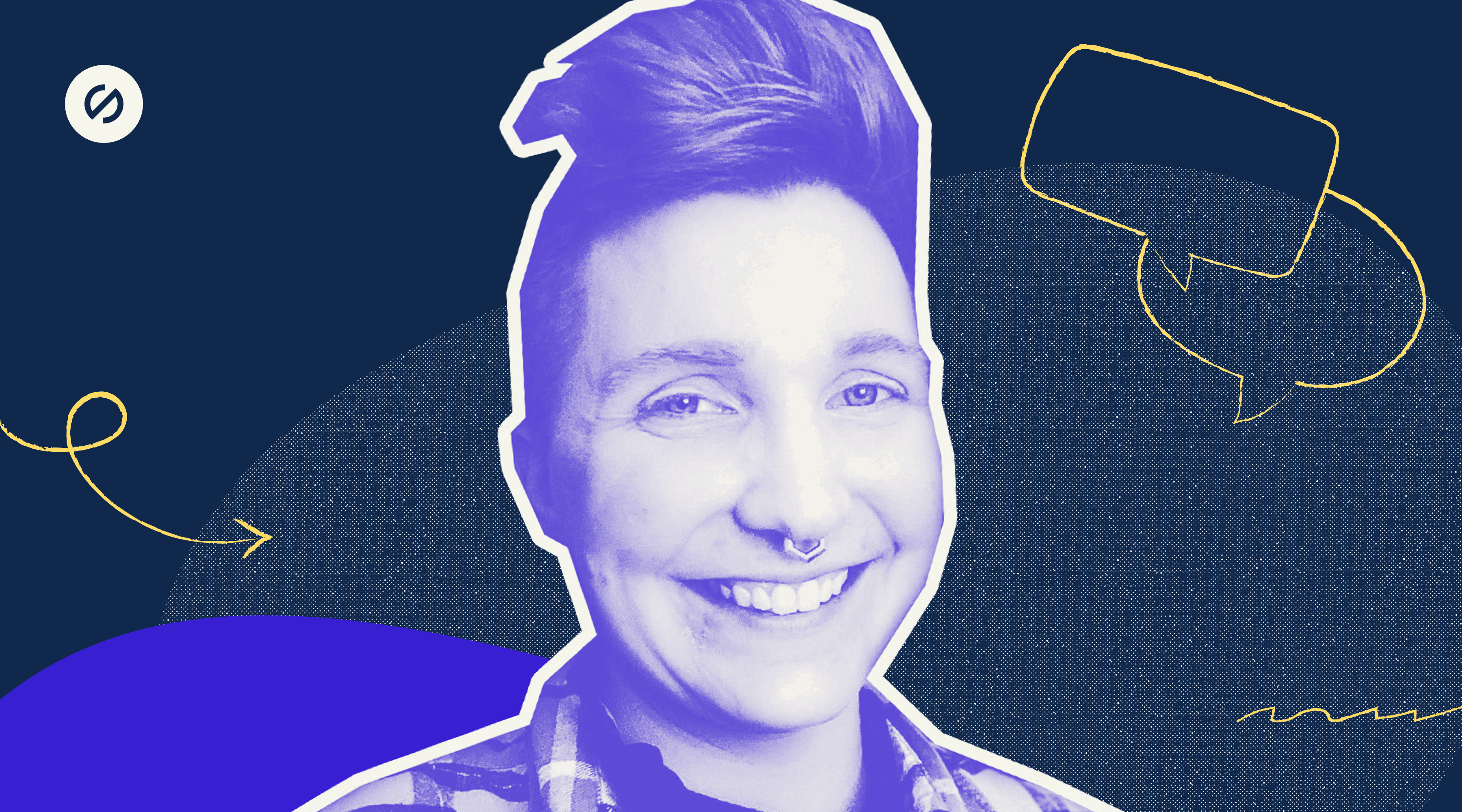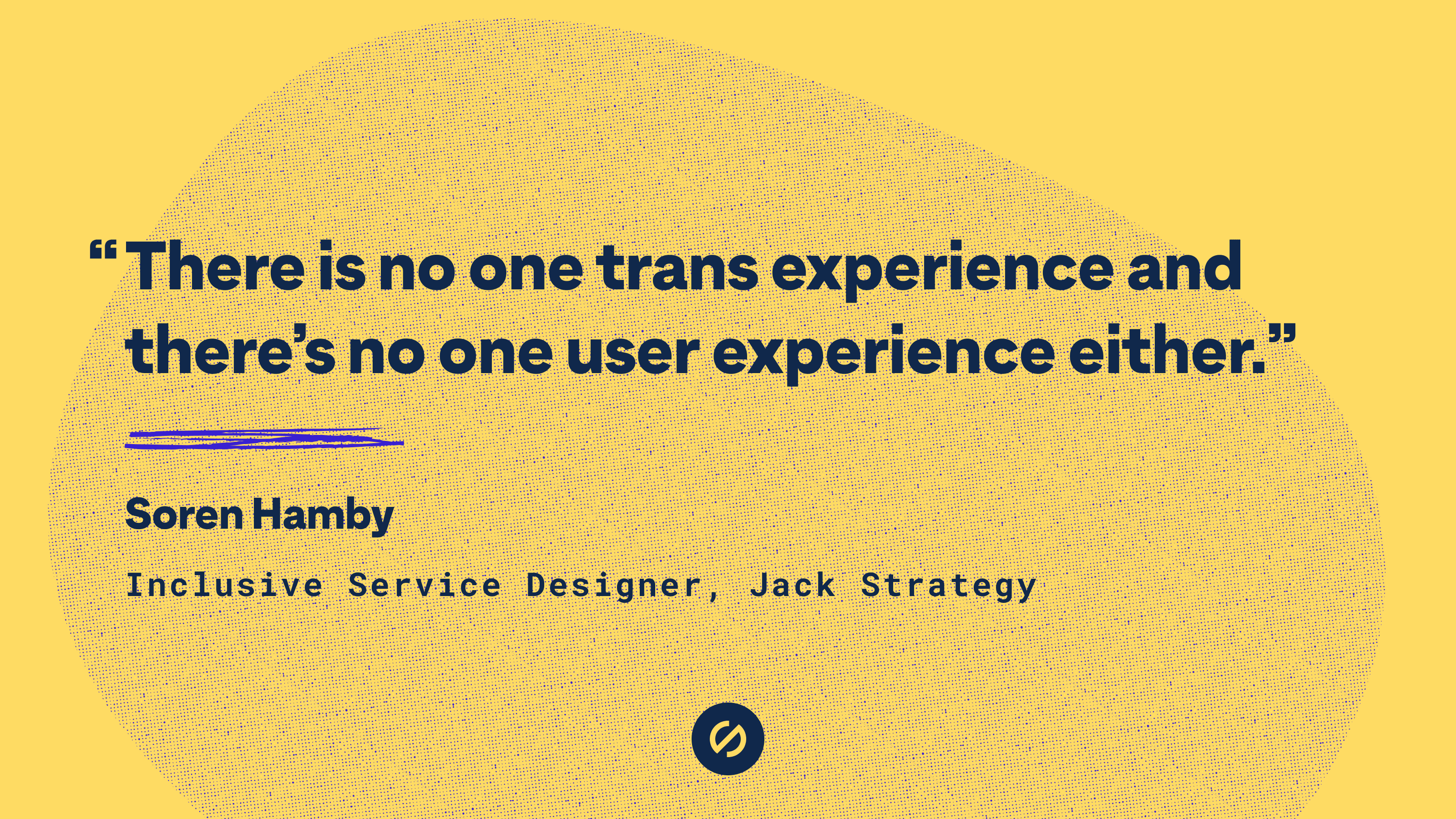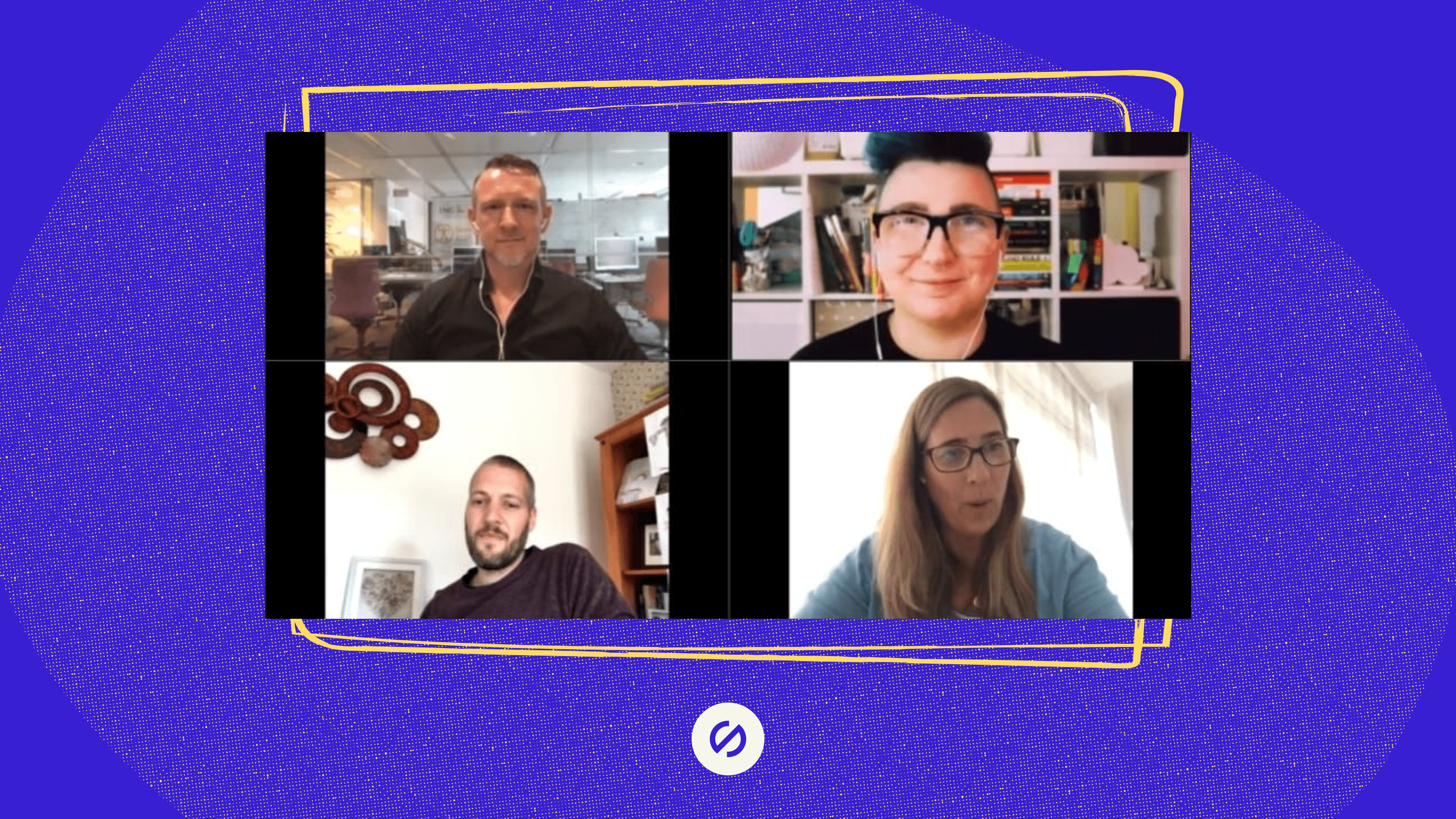Interviews
Spotlighting Access with Soren Hamby
In our latest community Q&A feature, Soren Hamby, Benjamin Moore's Senior Manager of UX and Digital Design, shares their insights and experiences around accessible design, building inclusive products and more.

Sagal Muse
Jul 06, 2021

Soren Hamby is a Senior Manager of UX and Digital Design at Benjamin Moore, a tech community public speaker and accessibility advocate based in the New York City metropolitan area. With their lived experience as a lens, Soren helps businesses leverage their most valued resources – people and passion – to create innovation and social change. We recently connected with them to discuss their journey in product design, identity and how to build inclusive products.
What inspired you to get into product design?
There were many things, but I think the most universal theme was that I wasn’t satisfied with the process of web design and I didn’t see human experience as devoid of emotion. One moment stands out specifically. I was working as a visual designer and was told that the work was right, but the boss wanted it to feel more “jazzy.” I realized from my previous experience writing that there was a disconnect with the audience/users and the people making decisions. It was that day that I web searched “objective design” and found user experience and a book on designing for emotion. It was one of the defining moments in my journey that led me to go back to college to get my bachelors degree while continuing to work as a visual designer.

Everyone's experience is their own. What does being trans look and feel like to you? What role does that play in the way you navigate your journey as a Senior Manager of UX and Digital Design?
In a workshop on transgender inclusion and pronouns, the lead facilitator Max Masure had everyone write their name with their non-dominant hand. It feels strange and effortful. Then writing with your dominant hand feels natural, easy, and comfortable. That is a metaphor for what it feels like to be transgender. Relaxing into my identity is like allowing myself to write with the ease of the correct hand.
There is no one trans experience and there’s no one user experience either. In my professional career, I’ve worked at places that had a very inclusive and welcoming culture, but I’ve also worked at places that say they are inclusive and will not be. One place that I worked, I introduced myself with they/them pronouns and the leadership of the team refused to use they/them when referring to me, which created a lot of confusion. During Pride month that year, I felt gutted when I walked in and there were pronoun pins and rainbow and trans flags absolutely covering the entryway for the entire month. It’s really rainbow-washing at it’s best when they provide they/them pins for your use, but won’t call you by it. I have also met people that are eager to learn but just don’t have LGBTQ+ exposure or see representation in the field. I love writing articles, running workshops, or giving talks that might help people that are open to learning to be more informed.
Understanding the struggles that I and other trans folks face helps me to widen the lens and decenter my own experiences. I feel so much empathy for others that face intersecting obstacles as well. As a designer who is disabled, blind, and neurodivergent, there’s layers of challenges that we face. There’s a bit of a divide right now between DEI (diversity, equity, and inclusion) and accessibility. Inclusion as an industry should include accessibility but often these two fields remain divorced from each other. I often feel like I have to champion one or another of my “causes',' but there’s so much diversity in each community that it’s hard to untangle overlapping identities into neat boxes. Even in accessibility, there’s so much difference in lived experiences of blind vs hard of hearing (HoH) or d/Deaf users that it’s hard to know all the context and design accordingly. Add in racial discrimination, immigrant status, or LGBTQ+ identities, and you find that things get complicated quickly.
Who is one person in this space that inspires you the most?
I will send my respect and love out to Reginé Gilbert for all the work that she’s done in this space and for being an incredible role model. If you haven’t bought her book, Inclusive Design for a Digital World, I recommend it!

How can product teams improve in building inclusive products?
Having more trans and disabled people in the room. We’re out there, and a lot of us don’t feel included in corporate culture because of how steeped in cis- or able-normativity it is. Put our peers in leadership. Be an advocate for disabled and LGBTQ+ folks and policies internally that are more inclusive. A good first step is to work with hiring resources that let people with disability status volunteer, like Chronically Capable, Inclusively, Queer Design Club, and Incluzion. Whether they have a visible or invisible disability or other identity, this allows people to self-select if they want to disclose their status and ensures that you are recruiting from diverse perspectives.
One of the biggest examples I can think of recently where you can clearly see that teams benefit from diversity is Twitter’s Voice Tweet misfire. The team, which was comprised of able-bodied folks, launched a feature with no accessibility. I’ve also noticed job descriptions using s/he or just the masculine as default. They is a neutral pronoun and includes most people by using it. An instance of things going right is the consulting that went into the True Name credit card for transgender and nonbinary people - a card that lets you use your true name, rather than your legal name. This came from the feedback of trans and nonbinary people that found their cards were outing them. Having trans people in the room, in the pilot program, and involved in the marketing has vastly improved the quality and accuracy of the product.
If you could share one book, podcast, video or general resource that everyone should look into, what would it be?
Inclusify: The Power of Uniqueness and Belonging to Build Innovative Teams by Dr. Stefanie K. Johnson. This book is a great start to helping create a culture of diversity and inclusion with practical examples and strategies. I think anyone can benefit from understanding bias and unraveling the Dark Patterns that exist in ourselves and in our company cultures.
Enjoyed this community feature? You can connect with Soren and the rest of our community of designers, developers, and product managers via Slack, or feel free to share your thoughts on Twitter and Instagram.